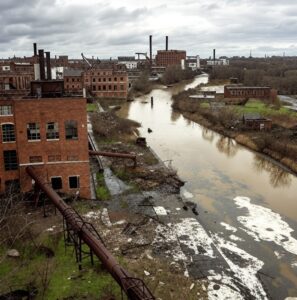Where’s the infrastructure & investment?
 Strategies, plans, policies, pledges, targets, numbers—should we be concerned? This article argues that we should. Clearly, there is already widespread concern across various sectors.
Strategies, plans, policies, pledges, targets, numbers—should we be concerned? This article argues that we should. Clearly, there is already widespread concern across various sectors.
Discontent and division are, in part, symptoms of our failure to build Britain. This is a concrete reflection of the growing mistrust in the state’s ability to deliver and provide – or at least facilitate growth opportunities – for its citizens.
Can we trust the latest government proposals?
Across the country, many are questioning the role of the state: whether we want more or less of it in our lives, i.e. how might the economy function better with a regulatory state, or whether it might be better to enable the market and its free flow of capital to determine things. If there is to be a state actor, should its powers be national or local?
In this context, the infrastructure crisis stands out. Although inter-related, it’s different from the crises in health, education, or policing. Our inability to build enough safe, warm homes; align energy investment and modern technologies with transport, utilities, and communications, and maintain the very fabric of our country is telling. As Norman Foster said, “The way we build is a reflection of the way we live.” Today, we live in an age of over-programmed, over-budgeted, temporary, and fragmented regulation so it’s hardly surprising that we have vague, underfunded promises that are buried in vast, opaque, word-salad policy documents.
We have ever-increasing constraints on building, many of which are self-imposed policy constraints that limit the imagination, and the human ingenuity that is essential to solving our problems.
Whether it’s temporary housing, new and affordable homes near transport, schools, parks, and culture or just simple, decent places—we’re not building enough. And we’re letting too much of what we have decay across urban, suburban, and rural communities.
Can We Believe Government Announcements?
In summer 2025, the new 10-year infrastructure plan begins by referencing the UK’s railway boom in the 1840s and the Olympic Games of 2012—an odd historical leap, but though this may seem incongruous, the document goes on to list projects for investment such as:
- A Universal Studios theme park
- Investment in ports for floating offshore wind
- HS2
- A new supercomputer at Edinburgh University
- Oxford flood alleviation
- Sizewell C
- Barrow regeneration
- North Manchester General Hospital (still in workhouse-era buildings, but this is a welcome development)
- 65 new schools in the north west —though details are vague across 123 education authorities.
These performative policies seem to echo Boris Johnson’s “40 hospitals” pledge—projects selected for political optics rather than strategic coherence.
- What’s missing is the “How,” as well as:
- Whose money is being used?
- What’s public vs. private investment?
- What are the actual costs?
Have we a national consensus on priorities to underpin impending tax rises?
There appears to be little authentic effort to build consensus on how and what we should build. We used to say we couldn’t move faster than the market. If policy merely follows market trends, its strategic purpose becomes questionable.
Where is our national vision?
I worked in Manchester, a city that has built a lot, despite obstacles. We can use the word transformation here. Forty years ago, it deliberately changed its economic purpose, and that shift still defines it.
My role involved regenerating 30 hectares of brownfield land—former gas works, 19th-century mills, polluted rivers, and filled-in canal arms. This post-industrial landscape, contaminated and nearly vacant, is earmarked for 5,000 new homes, parks, cycle lanes, and workspaces. It’s already well-connected, with three tram stops, Piccadilly Station, and proximity to the city centre and a major entertainment district. Yet fewer than 90 people live there alongside scattered businesses and drug markets.
It’s a classic regeneration zone. What it needs is investment—a lot of it. But not as much as a new town in Cambridgeshire, because we’re already in a city. It’s just that Manchester, the first industrial city, still bears the scars of its early history. Its post-industrial land is simply very expensive to bring back into use.
The necessary investment demands a return, and that is only possible with patience. Then again, the demand to live and work in the city is huge. So, what’s the holdup? Well, the primary barrier seems to be the lack of committed investment capital.
If you can’t sell or rent a home for more than it costs to build, nothing will happen. In the world of regeneration and development, too much time is spent preparing for the right moment in the investment markets. It’s not so much a rollercoaster, but a long queue waiting for a seat.
Planning, building safety, and infrastructure are constraints in themselves. We outsource affordable housing and public realm delivery to the private sector, adding net zero requirements (another 20% cost add-on). National planning policies now treat brownfield land as greenfield because decades of industrial decay have allowed nature to reclaim it. Wait long enough for a defunct car park to come onto the market and it’s got so much grass sprouting out of it, that it shifts its designation.
From individual sites to large urban developments, we need honesty about why building costs are 15–20% higher in the UK than in other European countries. The planning system is often blamed, but it’s not the root problem. Chronic underinvestment and economic stagnation are. This is not to deny that we are arguably over-regulating every aspect of building with national quangos holding decisive powers about Biodiversity Net Gain (or whatever the latest fad is). At the moment this is the ever-present ecological hold-up to search for and protect various innocuous wildlife species.
Loosening regulations might unlock some schemes, but would they be better for it? We have planning consents – applied for, assessed, appraised, and signed off – that aren’t being built.
This article is not about the detail of the ever-expanding regulations (of course many need revisiting) but it’s about the structural challenges we face as a nation are what are the top priorities.
Some of the structural challenges include the following:
- A de-skilled workforce
- A 50-year backlog of suburban repairs
- A need for 90,000 social homes annually for a decade (per Shelter)
- A total need of over 1.5 million homes (of all types)
Key Points
Market confidence is low. Investment is hesitant, due to poor returns and high risk. Molior forecasts only 15,000–20,000 private homes will be under construction in London by Jan 2027— a mere fraction of what is needed, at around 10% of the 150,000–200,000 that need to be built per annum. Additional problems include (and this is not an exclusive list):
- Barriers to housing are self-inflicted. Stamp duty, excessive development costs, and London-specific requirements for affordable housing and design are major issues.
- Planning and regulation aren’t the root problem. Under-investment and stagnation are.
- Net zero increases costs. And we don’t know who’s paying.
- Skill shortages are systemic. Recovery will take years.
Here are a few things that we need to do to shift the dial a little in the right direction:
- We cannot afford net zero without systemic changes to how we build.
- We need a national consensus—not local patchworks—to examine what and how we build, and whether we’re willing to pay for it.
- We need to shift the focus from new pledges to tangible outcomes. Focus on delivery, investment, and updating and upgrading the workforce.
Modern infrastructure is essential to a healthy economy. But with our current economic stagnation and near-zero growth, we’re in a rut. We are stuck with random projects, headline-grabbing announcements, no financial commitment, and a confused, unconvinced investment market.
If we need the state to focus on doing just a few things well – we may indeed suggest they stay out of our personal choices and instead they should re-build big UK infrastructure. It will eventually have to be the only state activity, the essential need to build safe, warm homes. Of course, we’ll also need to build more bridges: both real and metaphorical.
.






